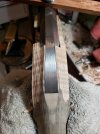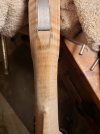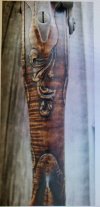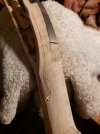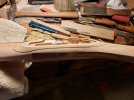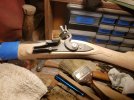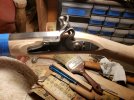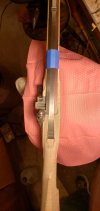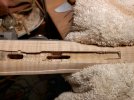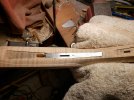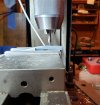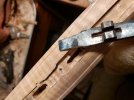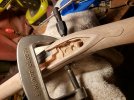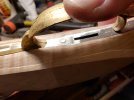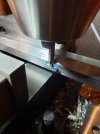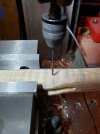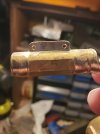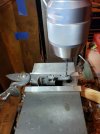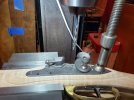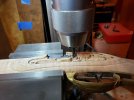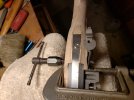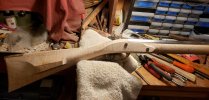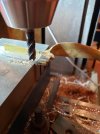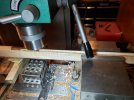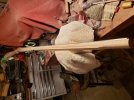Snakeoil
Well-Known Member
It pains me to read about the issues with the kit. I would have expected ToW, given their reputation, to have done a better job. I can see them not taking enough wood away, but taking too much or offsetting inlets is not acceptable.
On the positive side, I'm truly impressed with the work you did on the side panel. I know that was not a few minutes work. In spite of the issues, I suspect this is going to be a very pretty rifle when it's done.
The gap at the back of the rear barrel tang is probably something that grates on you. Do you have a plan to maybe modify the design to hide that gap. You know, some form of Ianization maybe? Maybe a piece of German silver or real silver inlet into the wood and into which initials could be engraved. I hesitate to make this suggestion because I know what it is like to have others make suggestions on something you are building. I was initially just asking if you were going to hide the gap in some ingenious way and kinda lost control and offered an idea. I'm sure you have already thought about this.
On the positive side, I'm truly impressed with the work you did on the side panel. I know that was not a few minutes work. In spite of the issues, I suspect this is going to be a very pretty rifle when it's done.
The gap at the back of the rear barrel tang is probably something that grates on you. Do you have a plan to maybe modify the design to hide that gap. You know, some form of Ianization maybe? Maybe a piece of German silver or real silver inlet into the wood and into which initials could be engraved. I hesitate to make this suggestion because I know what it is like to have others make suggestions on something you are building. I was initially just asking if you were going to hide the gap in some ingenious way and kinda lost control and offered an idea. I'm sure you have already thought about this.

